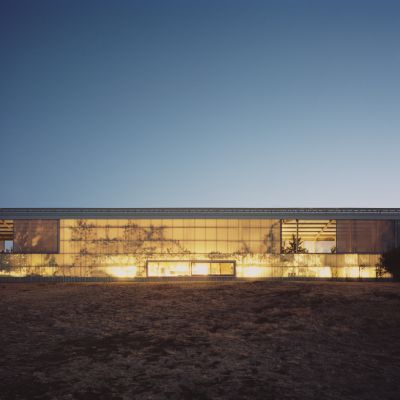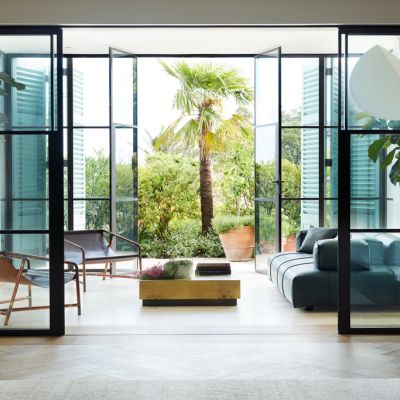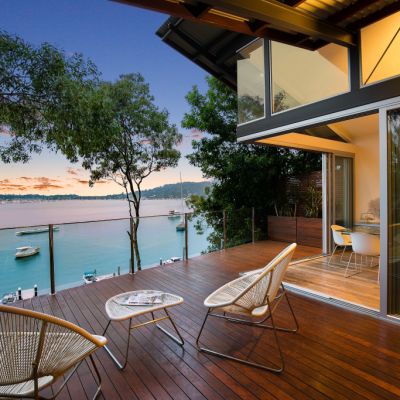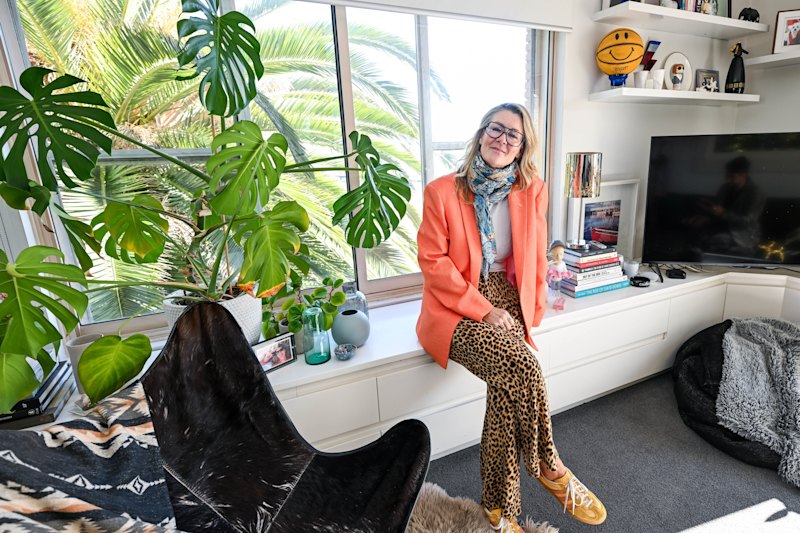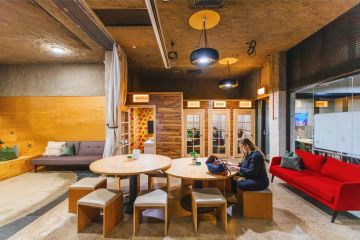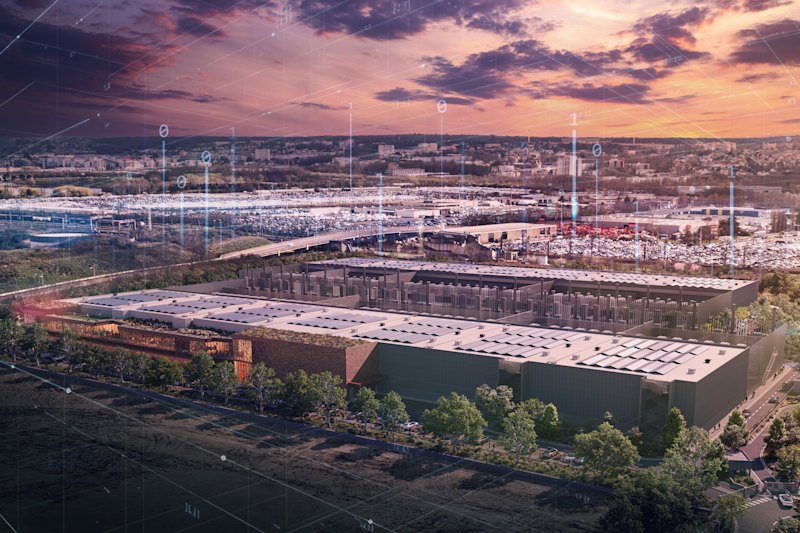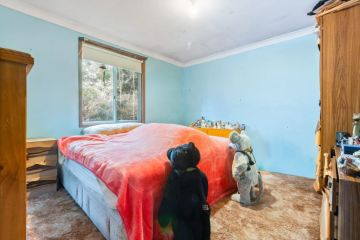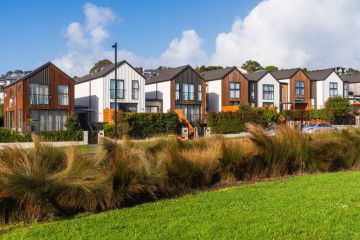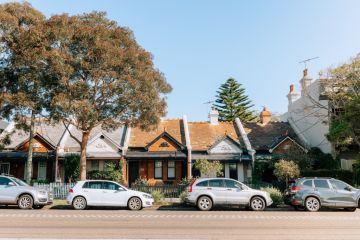Inside the home featured in new star-studded film Palm Beach
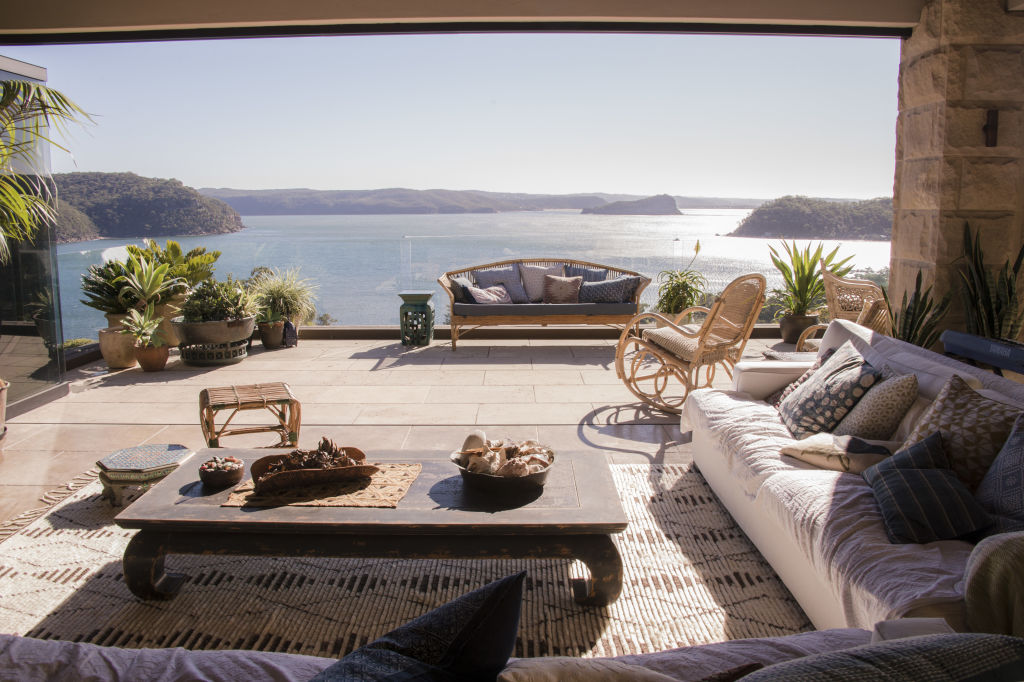
New Australian movie Palm Beach isn’t the first to feature a house to lust after. When the film Rosemary’s Baby pans over New York City’s famed Dakota building in its opening credits – John Lennon lived there – one can’t help but be entranced by its Gothic spires and dark castle appeal.
There was Andie MacDowell’s incredible greenhouse apartment in Green Card; the entire movie’s premise is based on the fact that she’s willing to marry to secure it.
And there’s the comfy grandeur of the house in Father of the Bride, so beloved by the lead character that she decides to get married at home.
Listen to episode two of Domain’s podcast Somewhere Else :
The relaxed-luxury beachside abode in Palm Beach has that kind of appeal: from the opening scenes in the Sydney suburb, when all the characters arrive, you’re ready to pretend that you’re also eating prawns on the deck – with expansive views over Lion Island, showcasing Pittwater and the National Park on one side, the surf beach on the other.
Producer Deborah Balderstone, who came on board after actor-producer Bryan Brown told her his idea – a group of friends gather for a three-day get-together but end up unpacking the big picture moments of their lives – says Palm Beach has always been special to her.
“It’s a really beautiful part of the world. When Bryan and I started developing the story, we had a conversation about various beautiful places, and we were sitting in Palm Beach [at the time]. We looked around and said, ‘Can it get any better than this?’ ”
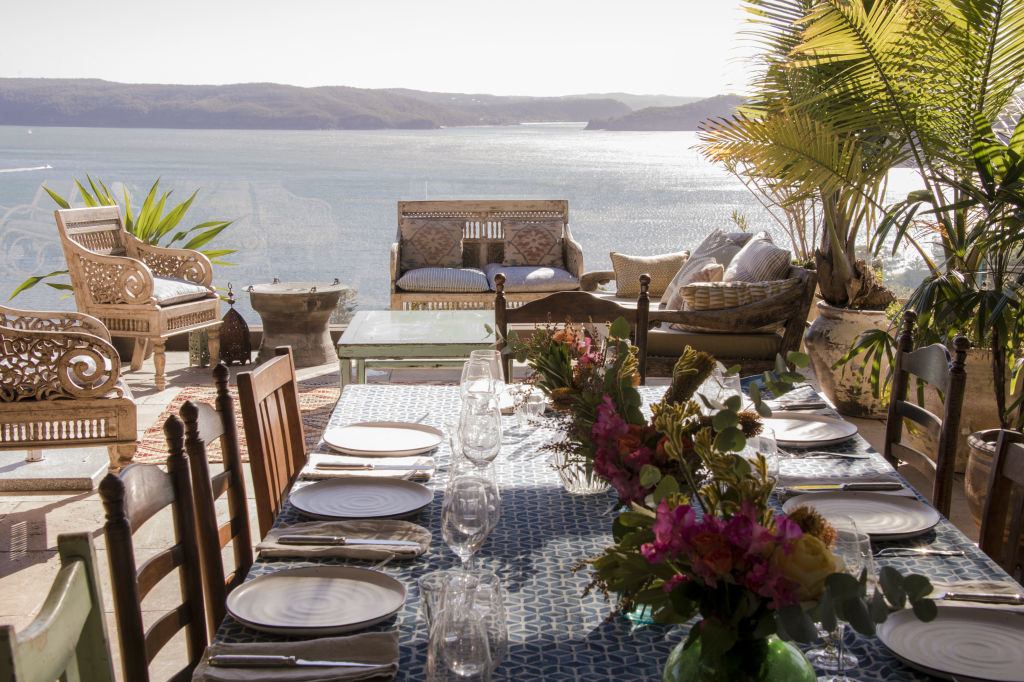
That sense of feeling good is something the pair hope to pass on to their audience, both through a stellar cast (including Brown, Sam Neill, Greta Scacchi, Richard E. Grant and Jacqueline McKenzie) and a story that forces you to work out what counts. It’s a movie that asks a Big Question: when you’ve reached an age whereby you’re no longer assessed on your looks, your job, your assets, what still matters?
Existential crisis aside, finding the right house was always going to be crucial.
It is the residence of married couple Charlotte and Frank (Scacchi and Brown) and where so many of the movie’s scenes occur.
It needed to suit the story and be cinematic. And most of all, it required sympathetic owners, who’d allow a cast and crew to take it over for three months, changing things along the way.
The house that proved ready for its close-up is owned by Sydney architect Susan Rothwell, who designed it together with her architect son Will.

Rothwell describes herself as both “thrilled” and “flexible” when approached for the shoot, and it’s a good thing she was both – a timber deck was built over the pool, a tree house erected, a pizza oven installed and walls were painted lighter. And all of it had to be dismantled by the production’s end, so it looked exactly as before.
But she never considered saying no. “Bryan’s a very persuasive chap – there wouldn’t have been many people who would be able to say no to him!” Rothwell says.
Furniture and decor changed the house’s look even further.
Plants were brought in, as were personal items that belong to the movie’s co-writer and director Rachel Ward and her real-life husband, Brown. Palm Beach proved to be somewhat of a family affair – their daughter, Matilda Brown, is also in the cast, and son Joe ‘Neathway’ Brown created some of the Mambo-esque artworks in the house.
“These are self-made people,” Balderstone explains. “Rachel wanted it to be an elegant incarnation of boho, and very much inspired by her own personal style.”
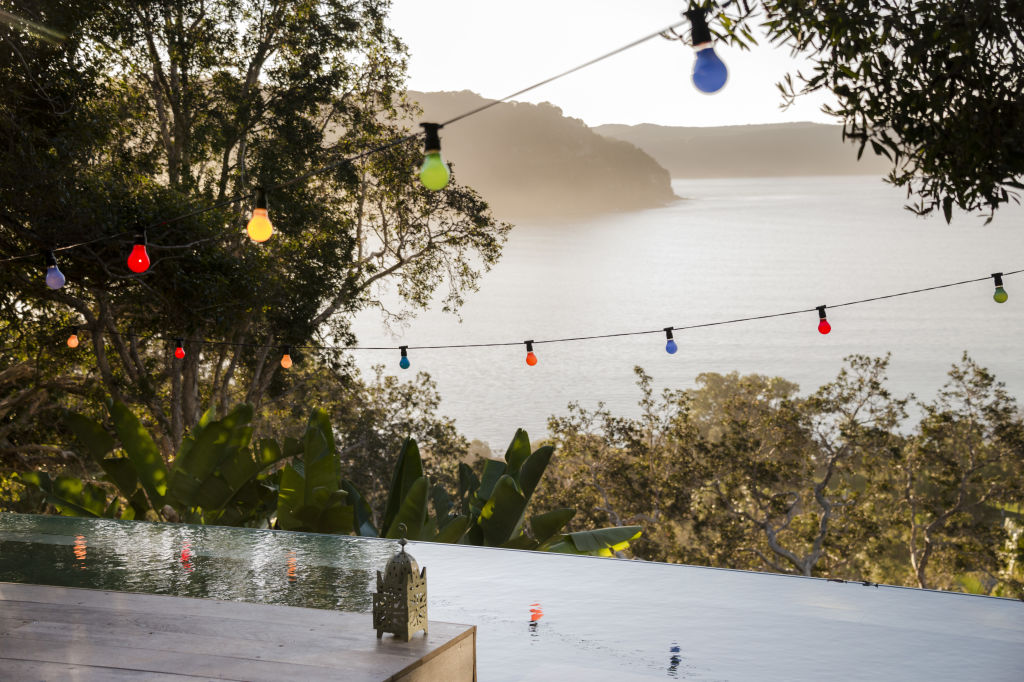
Even though the house displays the kind of enviable restraint that only rich people can afford, there’s no denying the appeal of its Italian stone floors, Hawkesbury sandstone columns and panoramic views.
This, too, was a deliberate choice, echoing one of the movie’s themes: a perfect exterior doesn’t necessarily tell the whole story. “We had to look for the right house to state that Frank was a very successful businessman,” Brown says.
“It had to state that right off, because that’s part of the irony of life: what goes on in your head doesn’t have anything to do with the bungalow you live in. [The latter is] determined by economic circumstance, luck, hard work – whatever you want to say. But what goes on in your head is personal.
“Frank is economically successful, but what do you see when you first meet Frank in the movie? He’s taking an anti-depressant.
“It’s an irony about the pain that goes on in your head – outside it looks like you’re in paradise, but inside you’re in hell.” However, inside the house there’s inspiration for the design-minded.
For starters, there’s the corrugated iron roof in the entrance and open-plan living area, which Rothwell sourced from a timber mill.
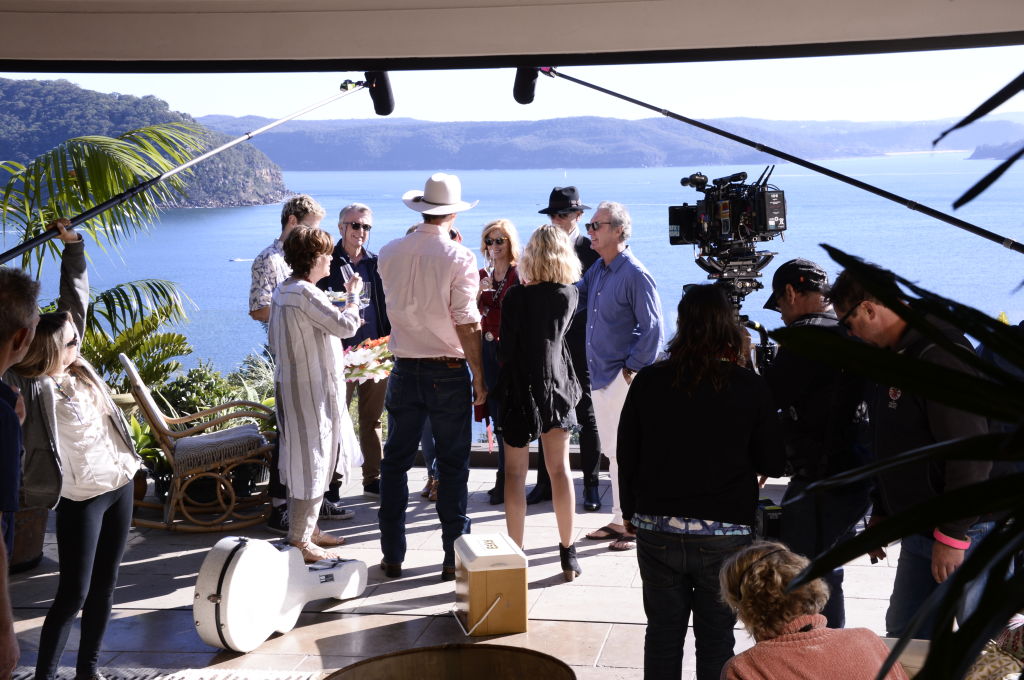
It had been a leaking, rusted roof, until she bought it and turned it into a ceiling.
“The house is very architecturally interesting,” Brown says. “Frank is a man who can afford it, as he’s done well in life – but it doesn’t help the pain in his head.” And although Brown’s son Joe’s artwork fills the walls, they’re not always highlighted on camera. “He’s rather disappointed in me, because a lot of the scenes were on the wrong walls for his stuff [to be seen],” Brown laughs. “He’s a great kid; he knows how it works.”
Palm Beach might also experience a tourism boost; one can only imagine how many audience members will try calling up The Boathouse restaurant to cater their next luncheon (so much of the delectable on-screen food comes from there) once the movie’s credits roll.
“I’d rather keep Palm Beach as my little secret – the opposite of what we’re doing by calling it Palm Beach – but I imagine it will be a revelation to people, how beautiful it is,” Balderstone says. “We haven’t enhanced it at all. It’s a lovely, sleepy, casual place. We wanted it to be somewhere where people watching it would have a little bit of a holiday as well.”
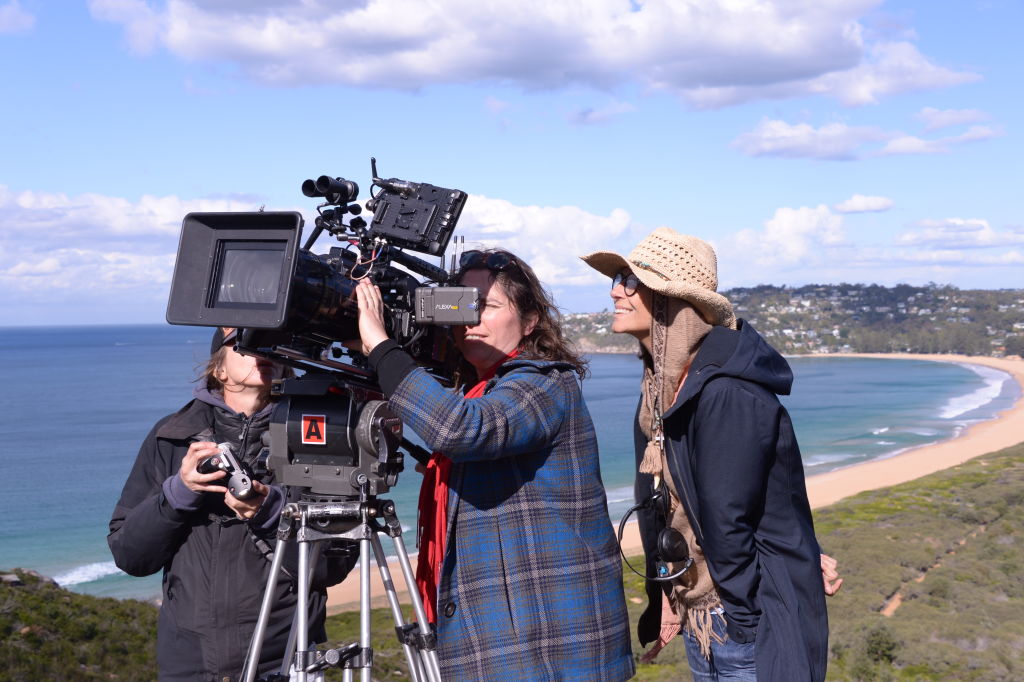
We recommend
We thought you might like
States
Capital Cities
Capital Cities - Rentals
Popular Areas
Allhomes
More
